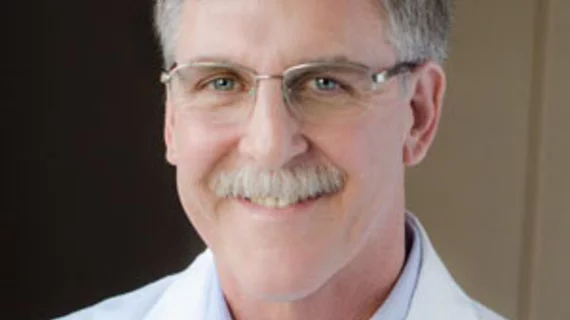Renowned radiologist retires, Medical center’s new imaging leader, and more people on the move
‘World’s foremost’ pediatric radiologist retires
Renowned University of California San Francisco pediatric neuroradiologist Jim Barkovich, MD, retired from the institution in June, and the university’s Academic Senate honored his achievements with a lengthy tribute published last week.
Barkovich developed a prototype magnetic resonance-compatible incubator alongside experts at General Electric that is now widely used to study pediatric brain injuries. He is credited with being the “father” of this technology, according to the biography.
His tenure at UCSF began in 1986 when pediatric brain imaging was in its infancy. Using MRI and CT technology, he established the foundation for current imaging standards in the field.
In 2012, Barkovich received the Radiological Society of North America Outstanding Achievement in Research Award and the American Society of Neuroradiology Gold Medal. UCSF’s radiology department will hold a symposium celebrating his career on Oct. 28.
“While we will miss his full-time presence within the department, we are pleased that Dr. Barkovich will continue to be involved with the department through an Emeritus role,” UCSF’s Academic Senate wrote.
New Jersey medical center’s new radiology leader
Monmouth Medical Center has named Tejas Shinde, MD, chair of its department of radiology, the organization announced Wednesday.
Shinde joined the Long Branch, New Jersey, center in 2006 and has been serving as its interim chair of radiology since January. Previously, he functioned as director of MRI and musculoskeletal imaging at MMC. During his time at Monmouth he also founded a core curriculum for radiology and orthopedic surgery residents, in addition to spearheading a number of imaging improvement projects.
RANZCR names a new interim leader
The Royal Australian and New Zealand College of Radiologists has named Mark Nevin as its new interim CEO, effective Sept. 25.
Nevin, previously RANZCR’s head of policy and advocacy, will serve in the position for 12 months while the board searches for a permanent replacement. He succeeds former chief executive Natalia Vukolova, who resigned to start a family, the organization said Aug. 31.
"You might say Natalia grew with the college, proving to be an effective force for positive change in many areas and guiding the organization out of the shadows as an advocate for the radiological professions,” college President Lance Lawler, MD, said in a statement, "We will miss her energy and untiring enthusiasm.”
Additional notable job changes
Finger Lakes Health in Geneva, New York, welcomed Eric Gregor as its director of diagnostics on Aug. 17. He will oversee all diagnostic imaging services, including CT scanning, nuclear medicine, ultrasound, interventional radiology, x-ray, cardiopulmonary imaging and women's health diagnostics.
RWJBarnabas Health named Alexander King, MD, director of breast radiology for its Southern region. He will assume responsibility for the clinical quality provided across three breast imaging facilities in the eastern New Jersey area.
Teleradiology provider NucleasHealth, has tapped Claude E. Hooton as its president and chief executive officer, effective Aug. 26. The San Diego-based firm attributed the move to companywide restructuring efforts.

